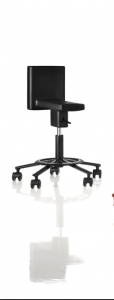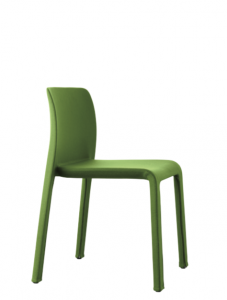Enzo Mari is considered to be one of the greatest exponents of Italian design, and indeed of world design. The creator of innumerable pieces that have become veritable icons, as well as an avant-garde academic, he loves archetypal shapes onto which he grafts his formulations, his talent and his leaps into the future. Mariolina is no exception. The image is only apparently a simple, fifties-style chair, and features a series of extra details that transform a humble seat into an intelligent object: the legs in chromed steel tube are in fact slimmer and more precise in section, and the polypropylene seat and back are not screwed or riveted to the frame, and are instead attached using a series of moulded ribs that grip the metal frame on the rear of the seat and back.
- Descriere
- Review-uri (0)




Enzo Mari is considered to be one of the greatest exponents of Italian design, and indeed of world design. The creator of innumerable pieces that have become veritable icons, as well as an avant-garde academic, he loves archetypal shapes onto which he grafts his formulations, his talent and his leaps into the future. Mariolina is no exception. The image is only apparently a simple, fifties-style chair, and features a series of extra details that transform a humble seat into an intelligent object: the legs in chromed steel tube are in fact slimmer and more precise in section, and the polypropylene seat and back are not screwed or riveted to the frame, and are instead attached using a series of moulded ribs that grip the metal frame on the rear of the seat and back.
Born in Novara in 1932.
He studied at the Accademia delle Belle Arti in Milan, and alongside his studies, in the fifties he had already developed an intense artistic production, with personal and collective exhibitions at galleries and contemporary art museums.
At the same time, he also began his design work, at first as personal, formal research, and later in collaboration with numerous industrial companies, in the graphics and publishing, industrial products and exhibition fittings sectors.
His work is internationally acclaimed, and considered to be among the most representative of Italian design. It is distinguished by constant research and experimentation with new product forms and meanings, often set in contrast with the traditional norms of industrial design.
His unique position as an artist-cum-designer is documented in the many publications dedicated to his work, and in his participation in major institutions, including ADI – the Italian industrial design association, of which he was president from 1976 to 1979.
He has three times been awarded the Compasso d’Oro, and his art works and objects are included in the collections of several contemporary art museums.
In 1983 a major personal exhibition was held by the “Centro Studi e Archivio della Comunicazione” at the University of Parma, which conserves 8,500 designs and drawings from his archive, donated by him.
His work has also included research and design in the field of street furniture (City of Milan, revamping of Piazza del Duomo) and education, in the form of conferences and series of lectures both in Italy and abroad, including courses given at the Institute of Art History of the University of Parma, and at the faculty of Architecture of the Politecnico in Milan.

![Mariolina Chair – Magis [1] Mariolina Chair – Magis [1]](https://gomagcdn.ro/domains/moor.ro/files/product/large/Screenshot-2019-07-02-at-14.57.05.png-4252-7058.png)
![Mariolina Chair – Magis [2] Mariolina Chair – Magis [2]](https://gomagcdn.ro/domains/moor.ro/files/product/large/Screenshot-2019-07-02-at-14.51.36.png-4252-1951.png)
![Mariolina Chair – Magis [0] Mariolina Chair – Magis [0]](https://gomagcdn.ro/domains/moor.ro/files/product/medium/Screenshot-2019-07-02-at-14.57.05.png-4252-7058.png)
![Mariolina Chair – Magis [1] Mariolina Chair – Magis [1]](https://gomagcdn.ro/domains/moor.ro/files/product/medium/Screenshot-2019-07-02-at-14.51.36.png-4252-1951.png)













